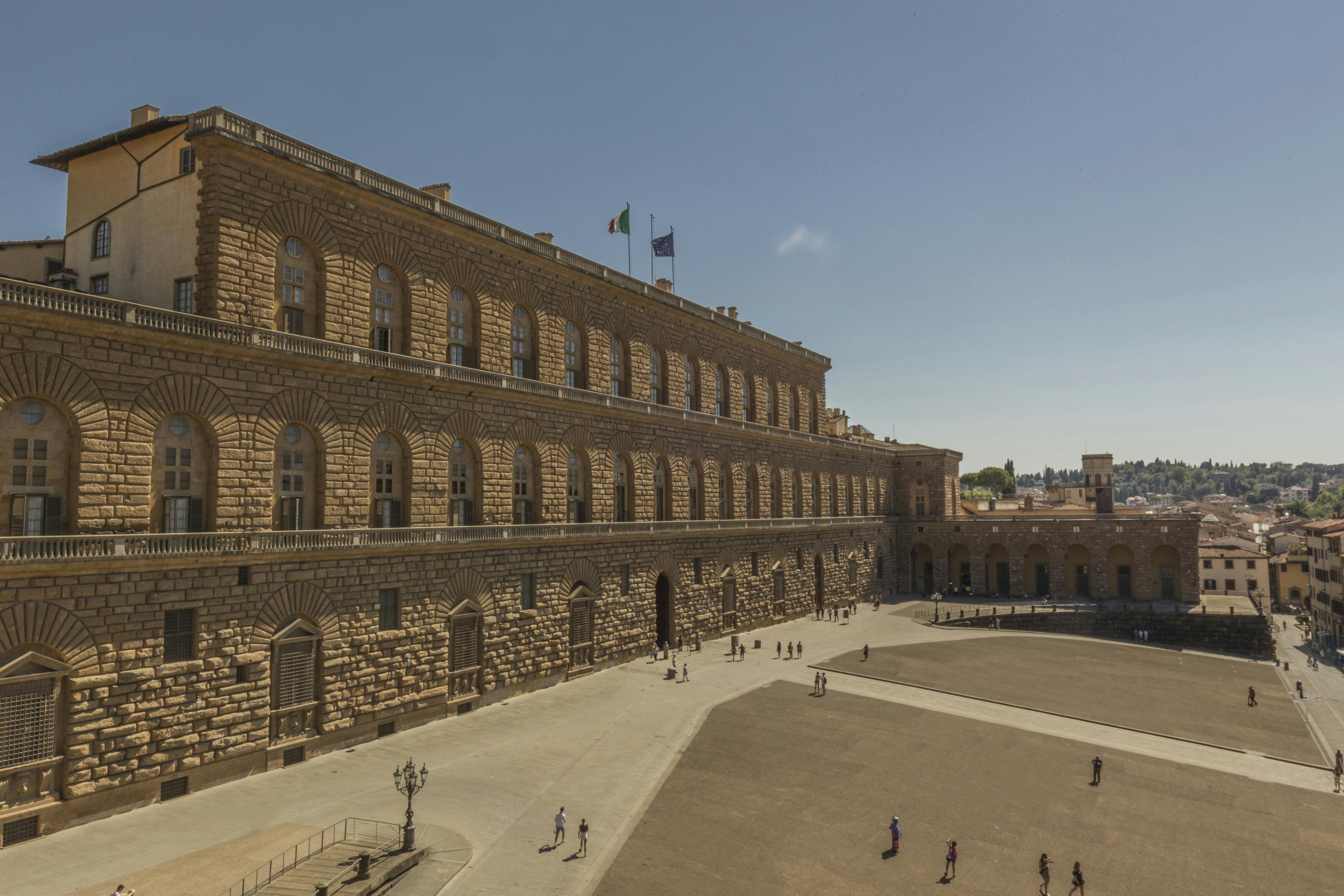History | Pitti Palace
Imposing building structure of rustic ashlar masonry on the slopes of Boboli hill, Pitti Palace is the largest of the Florentine palaces, bearing witness to the power of those who chose it as their ceremonial residence.
Although it was inhabited for about four centuries by three dynasties, the Medici, the Hapsburg-Lorraine and the Savoy, the Palace still bears the name of its first owner, Luca Pitti, a Florentine merchant who had it built as his private residence in the middle of the 15th century. In 1473 Luca Pitti died leaving Filippo Brunelleschi’s project unfinished. At the time the building had only three large doors and a double row of seven windows on the façade. Abandoned at the death of the merchant, the Palace was purchased in 1549 by Eleonora of Toledo, Cosimo I de’ Medici’s wife as a ceremonial residence worthy of the nascent Grand Duchy. BartolomeoAmmannati, the Grand Duke’s favourite architect, extended the main front and rear sections, and behind the palace the magnificent Italian Boboli Gardens were created. Therefore, the Gardens and the Palace were conceived and developed together over three centuries, in a close dialogue between art and nature which led the Boboli Gardens to become the model for royal palaces throughout Europe. Under the Hapsburg-Lorraine family the two front wings of the Palace were built with porticos and terraces, known as “Rondò”. With these works, the original size of the square was tripled. Now the Palace was ready to host the magnificent grand ducal works of the best artists of the time in its sumptuous frescoed rooms – “This most magnificent of all works”.
Passed in 1860 to the Crown of Italy and inhabited in the years when Florence was the capital of Italy (1865-1871) by Victor Emmanuel II, Pitti Palace was donated in 1919 by Victor Emmanuel III to the Italian State, together with the square and the Boboli Gardens.
Today the Palace houses the Treasury of the Grand Dukes, the Palatine Gallery and Royal and Imperial Apartments, the Gallery of Modern Art and the Museum of Costume and Fashion.
